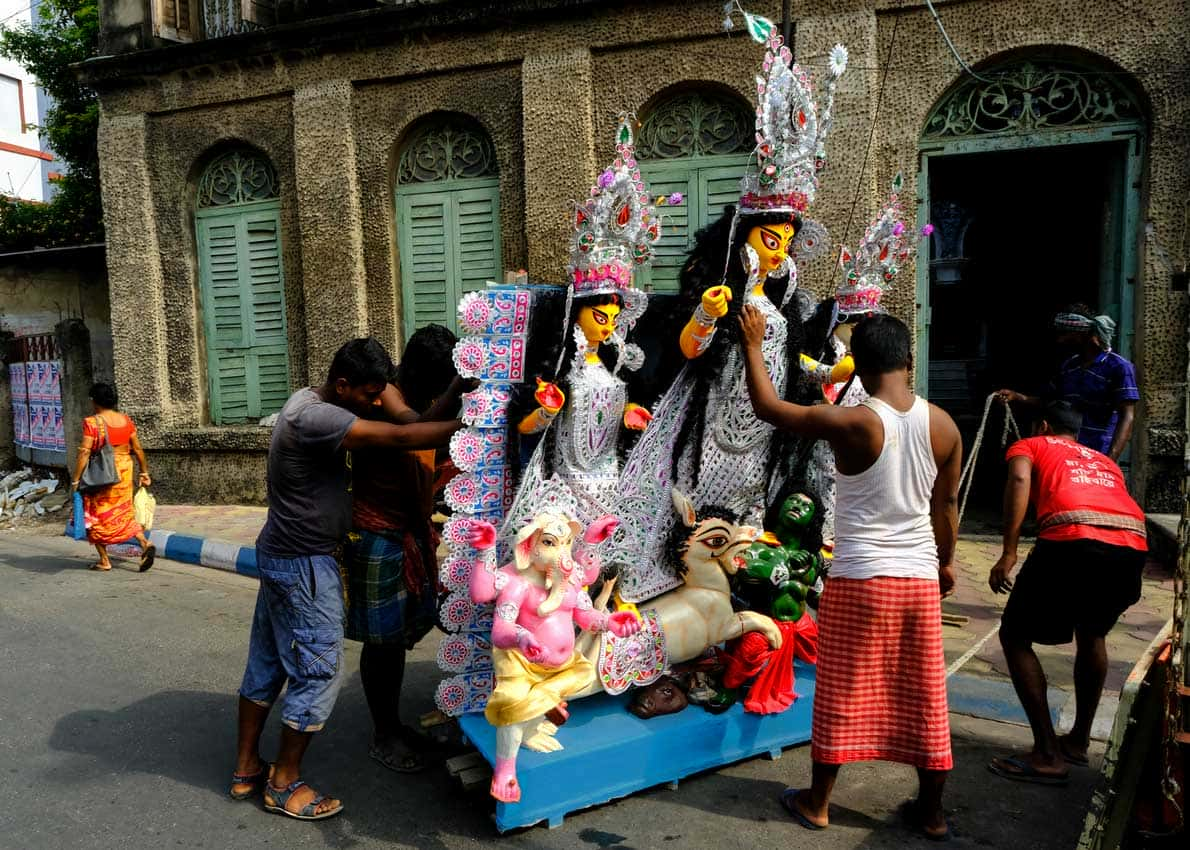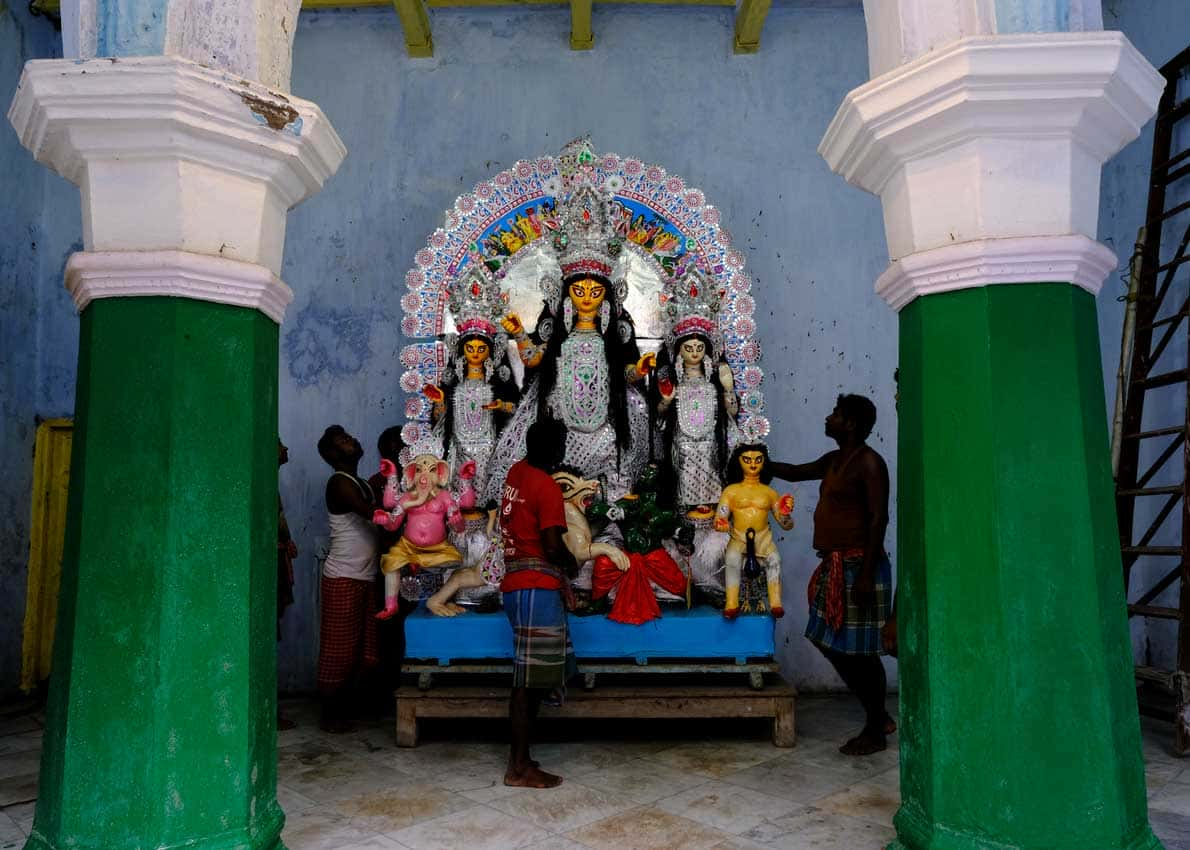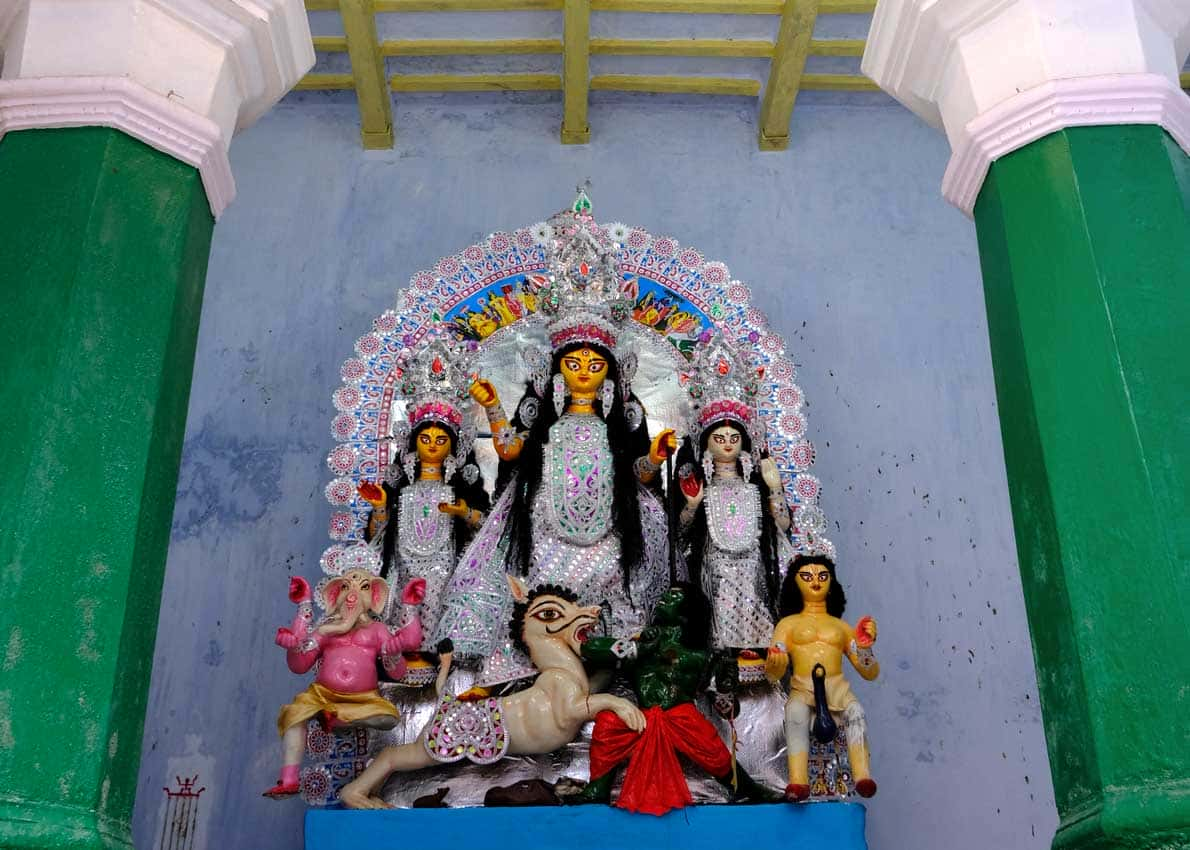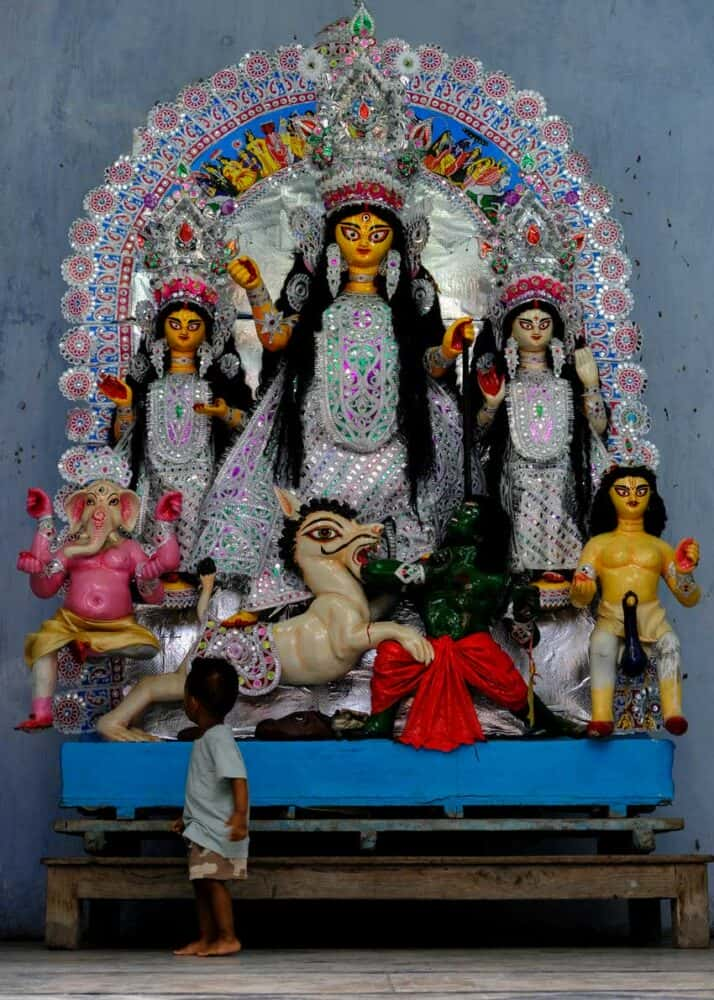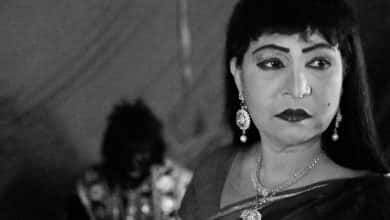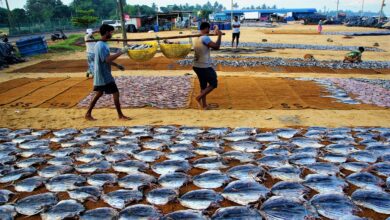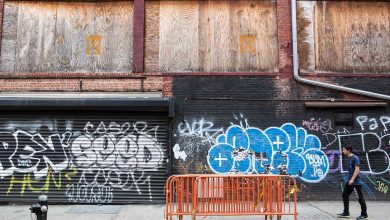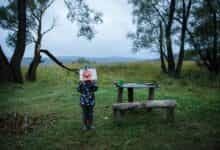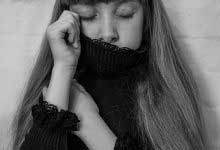The Bhowanipore Mitra Bari Durga Puja, was originally started by the late Narsingha Mitra in 1757 at Nilgopal Mitra Lane with ten prominent hands as is prevalent in many Goddess Durga idols. However, in 1892 the late Subodh Chandra Mitter (alias Mitra), the family’s 26th generation shifted the Puja to the Paddapukur Road House architecturally designed to have three arch structures. One of the daughter-in-law’s in the family back then is believed to have dreamed about the Goddess, who instructed to get gold ornaments for her two hands. From then onwards, the Goddess was brought to form with two prominent arms and the remaining 8 became rudimentary, hidden behind Devi Durga’s tresses.
The idol worshipped here in the traditional Ekchala format has several unique features. For instance the Chalchitra also known as (Debi Chal or Durga Chala), the background of the Durga idol. Originating from the Patachitra art in Bengal, the one in Mitra Bari describes the marriage between Lord Shiva and Devi Durga through imagery. Usually depicted as riding a lion, Devi Durga’s ride here takes the form of a Ghotak – horse. Goddess Saraswati and Lakshmi who usually ride the Swan and Owl respectively, don’t have any in this Puja.
With the Covid pandemic playing spoilsport for two years, the present generation’s helmsman Mr. Supriyo Mitra is hopeful that this year the family will gather together again in the festivities and celebration. This also comes at a time when the UNESCO recognised the ‘Durga Puja in Kolkata’ under its representative list of intangible cultural heritage.


